A book which is any fly tier's wet dream - or nightmare - depending on your angle of observation and approach to flies and fly tying.
Updated or edited 9 months ago
On the table next to me I have a book, which is any fly tier's wet dream - or nightmare - depending on your angle of observation and approach to flies and fly tying.
Some people will find a solid 232 pages about Woolly Buggers and Woolly Worms just about the worst thing imaginable in fly tying literature, while others - like myself - can't get enough of stuff like this. Gary Soucie's Woolly Wisdom is indeed a rare treat for down-to-earth-but-still-love-to-see-lots-of-patterns fly tiers like me.
What makes Woolly Wisdom even more interesting to me is the fact that I fish a Woolly Bugger type of fly about 90% of the time that I fish, and yet another 90% of that time it's actually one specific pattern - a hybrid between a couple of patterns that Gary actually asked me to supply for the book, namely the Grey Frede and the Magnus/Bjarke patterns. So I am definitely in love with the Woolly Bugger, and this simple yet efficient pattern occupies a large space in my heart as well as in my fly boxes.
I honestly rarely fish the genuine Woolly Worm or Woolly Bugger, but a vast majority of my favorite flies have so much in common with these classics that it is sometimes hard to tell the difference. I have had great success with an olive Woolly Bugger fished down and across as a damsel nymph and I know that some of my own favorite Woolly Bugger patterns have caught many species from bass to tarpon. But I rarely tie or use the plain black style of these flies.
Soucie's book clearly demonstrates that the Woolly Worm and Woolly Bugger style of flies have been spread out to a wealth of different types of flies, some so far away from the originals that it's almost crazy to put them in the Woolly family, but anyway. The book describes about 400 patterns, which can all draw their ancestry back to the Woollies. You will find everything from slight variations of the classical style flies, to something that is only vaguely similar. The selection spans from large wet flies for saltwater use to small dry flies, and leafing through pages is just one jolt of inspiration after another. I personally get a kick from seeing all these different and then again somehow strangely identical flies.
The book starts out with the author's introduction to his own approach to the buggers and a historic chapter, which lets a lot of well known fly tier's and authors have a say about the Woollies. Soucie also tracks down the origin of the patterns, and the book's two major sections - one on the worm and one on the bugger - each commences with a thorough guide to tying the basic patterns. A few other patterns are illustrated with tying steps, but the far majority of patterns are just shown with photos of the finished flies. You will still easily be able to tie most of the flies from these pictures, the material's list and the description. The Woollies are not the most complex of flies...
There's also a small section on how to fish the flies. This mainly regards the original patterns, since the many different applications of the Woollies call for all kinds of both common and stranger fishing methods as a result of the family of flies being able to solve most tasks within fly fishing.
The flies are all well illustrated and have all been photographed by Jim Schollmeyer while some of the tying steps are done by Peter Frailey. They are all shot in the usual Schollmeyer-way: straight on on a bright blue background. While this is a perfect way to see the details of a fly, it's not exactly beautiful. Schollmeyer's pictures are technically impeccable, but I miss a bit of variation or a plate or two of some kind as it's seen in many contemporary fly tying books. There is the odd picture with flies laid on a reel, but not really anything meant to please the eye. But this is not meant as a coffee table book, but a tying book, and as such the pictures work very well.
In essence that captures about my only criticism of the book: its visual appeal. Neither the cover nor the layout as a whole is really visually appealing, but more like bread-and-butter layout. But it works of course, because luckily the overall concept, the thoroughness of the research, the text and the richness of the patterns compensate for the lack of visual beauty in rich measures.
This book is bound to become a classic, and should definitely be on the shelf with any book loving fly tier.
- Log in to post comments


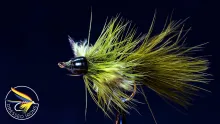
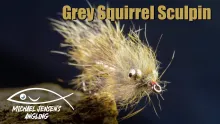
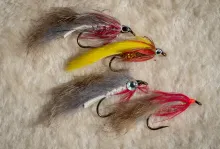
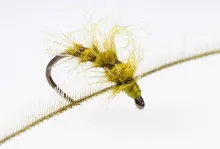
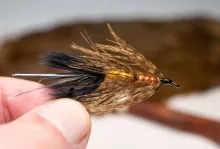

ah yes, the woolly b
ah yes, the woolly bugger. the greatest fly, the fastest fly to tie, shit man you can build them any way you care to, and still the fish take them. any fish will take a bugger. from size 6 to size12, it really don't matter. the greatest fly.
I love to collect fl
I love to collect fly pattern recipes from sources all around the world, magazines, books, internet, American, European and this book has about every variation on wolly worms and buggers, dry and wet patterns, etc. that I have come across. An amazingly thorough reference. Five stars, no make it SIX stars on this subject!
Nice report. On my l
Nice report. On my list for Christmas. Believe Amazon will have it. Just thought about it: Do not buy too many books currently because very busy, but approx. 80% is connected to Flyfishing or Rodbuilding...
Great book.
Great book,in my personal library as I type.